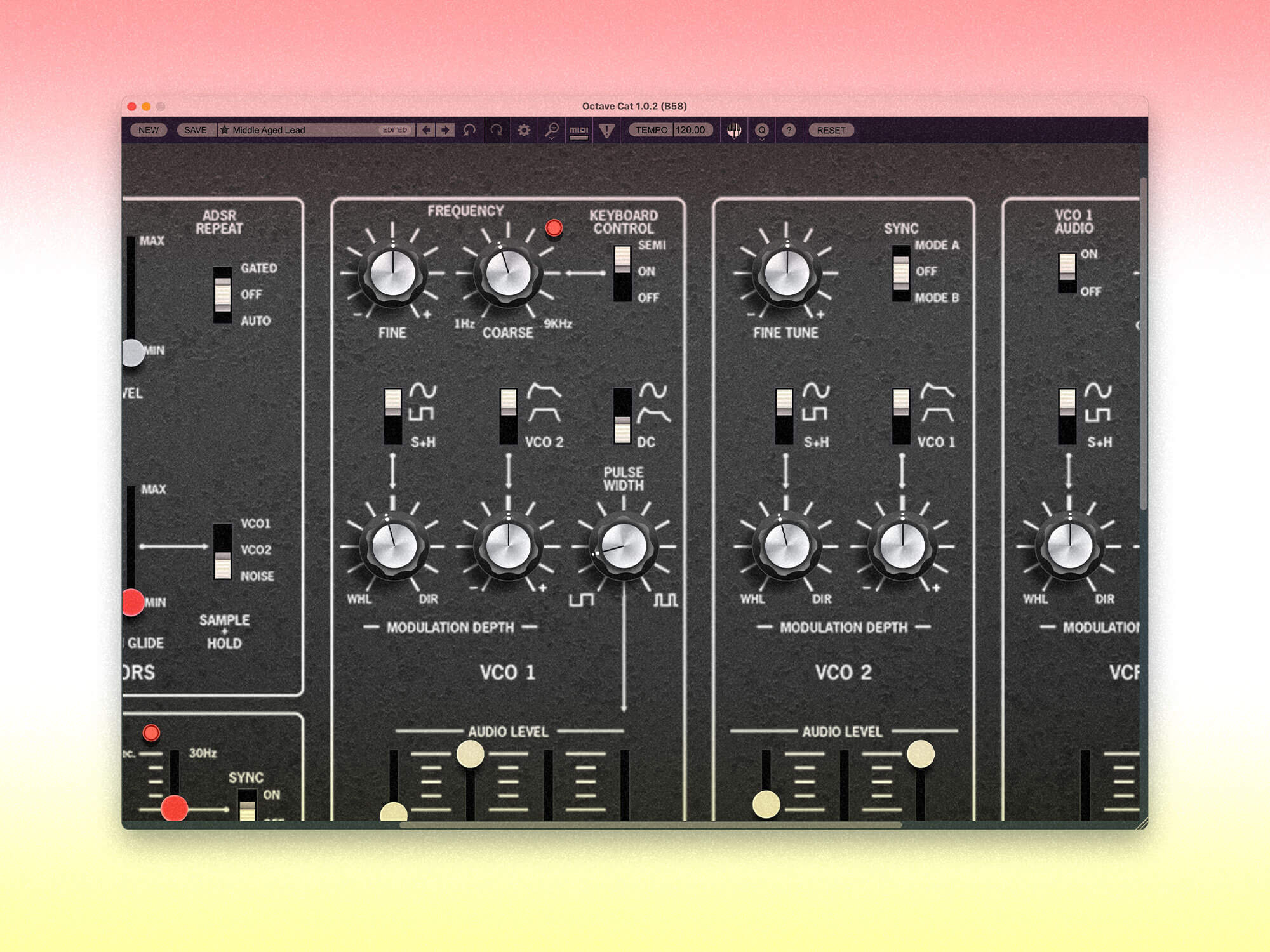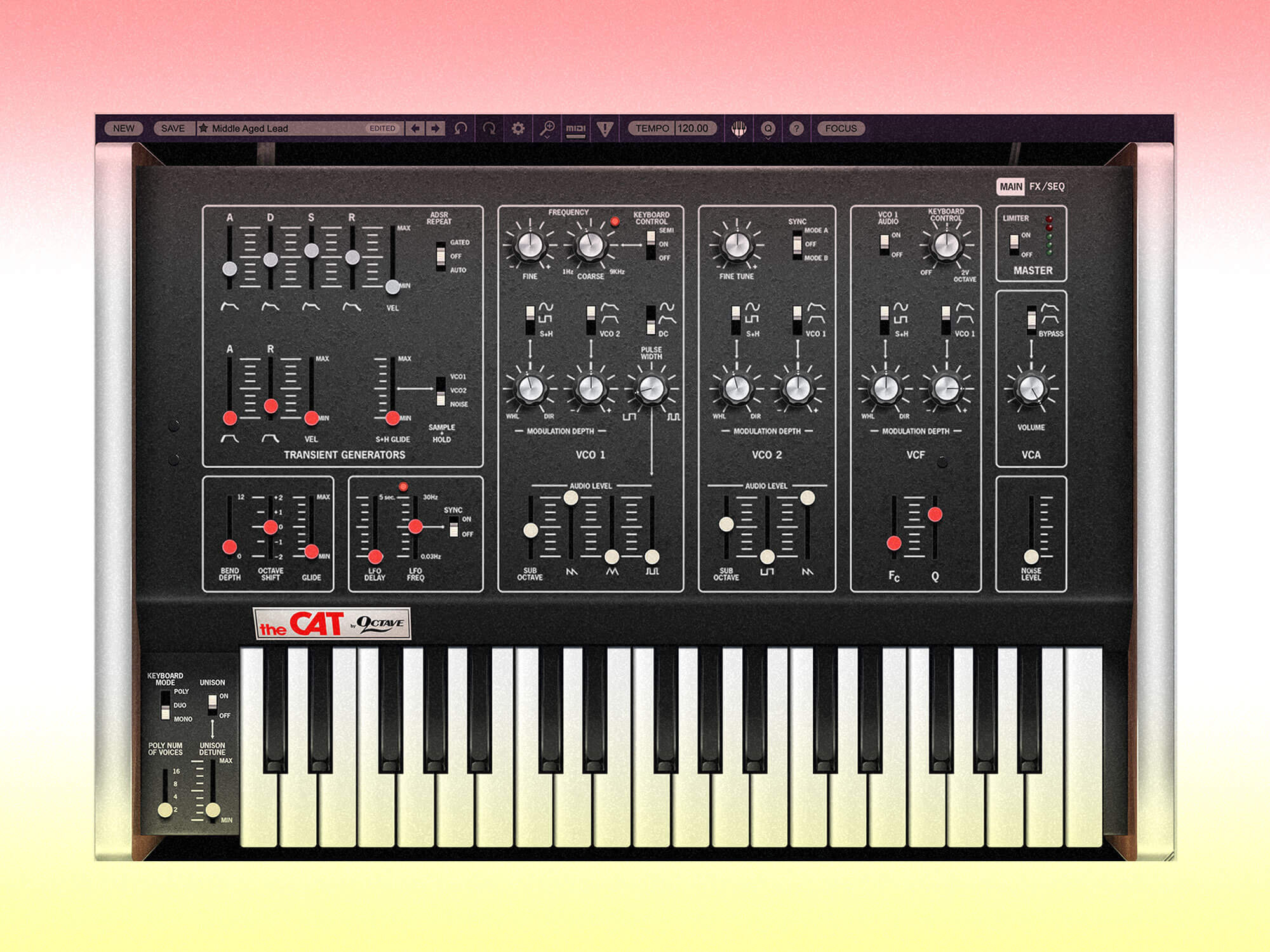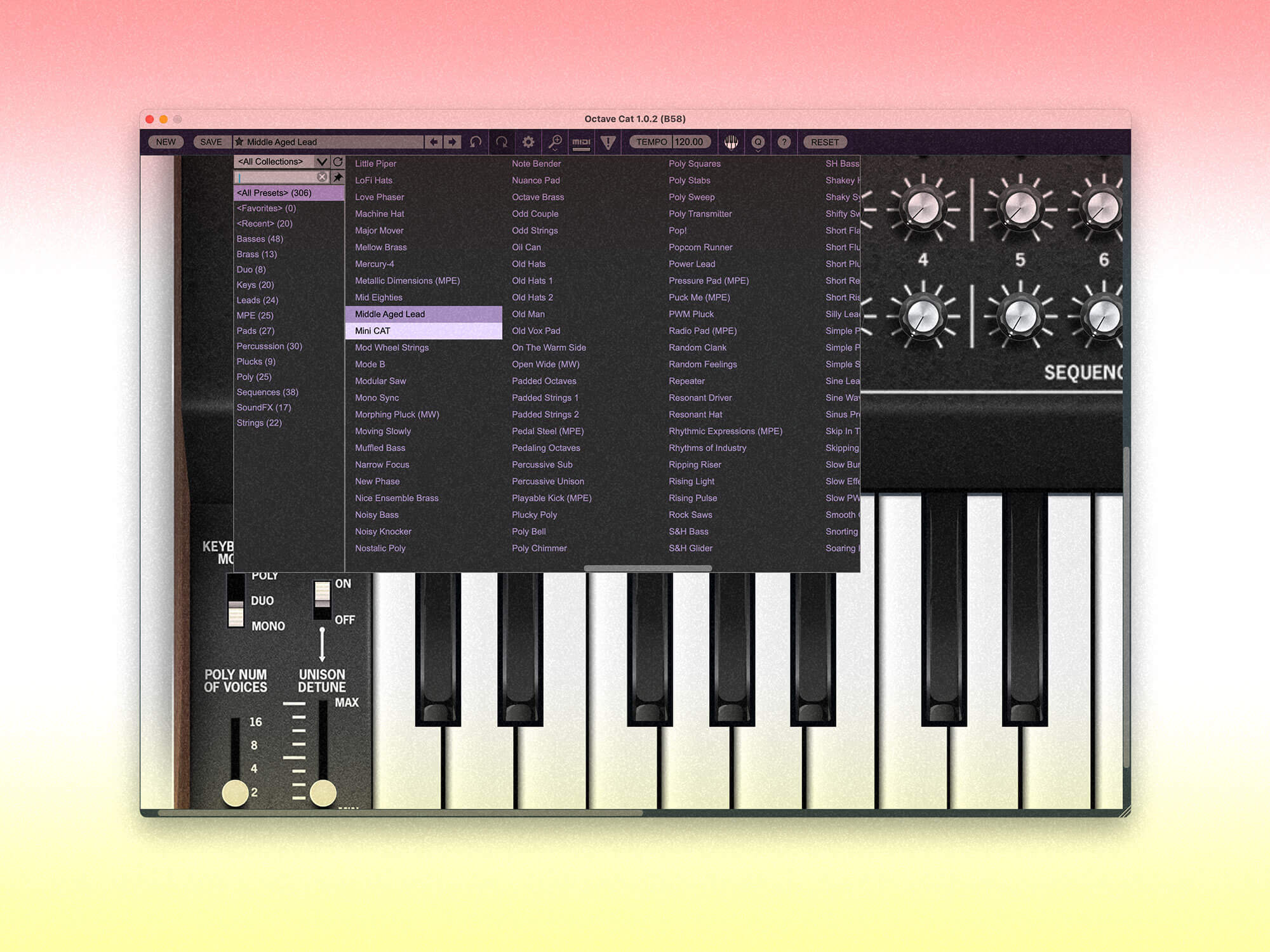Cherry Audio Octave CAT review at MusicTech
MusicTech's Verdict: Cherry Audio’s quest to resurrect some of history’s rarest and most interesting synths continues apace with its new Octave CAT, a recreation of the 1976 classic The CAT duophonic synthesizer – and we think you’re going to love it.
Octave Electronics released The CAT at a time when portable synthesizers were a rare luxury – you can imagine why The CAT’s price tag of $599 was appealing. Used by the likes of Devo and Split Enz, more recent fans include The Chemical Brothers and The Prodigy. In this plugin, you’ll benefit from Cherry’s usual bargain price of just $49, with a 30-day demo available. The software version comes in standalone and plugin versions and, expectedly, expands on the original with up-to-date additions.
Faithfully modelled on the original hardware in collaboration with its designer, Carmine Bonnano, Octave CAT incorporates Cherry’s familiar wrapper, with up to 4x oversampling, Focus to zoom on the interface, support for MPE MIDI and fully automatable controls with MIDI learn and mapping incorporated into the instrument. Updating the instrument is also handled from within the interface which is a useful timesaver.
Two distinct VCOs dictate the sound, each with discrete wave, modulation, Sample-and-Hold and sub-octave settings; VCO1 has saw, triangle, and pulse with PWM, and VCO2 has square and saw waveforms.
Since the VCO sections – and the instrument’s controls in general – are modelled on the hardware, all the controls, dials and sliders are at your fingertips with practically no menu diving required. This makes it easy to tweak them in real time and it’s a tremendously organic feeling to play with the frequency, modulation and level controls in the VCOs to dynamically change the character of the sound. The same is true of the filter section, where you’ll find a vintage-accurate four-pole 24 db/oct filter based on the original ‘cascaded OTA’ SSM2040 filter with precise replication of the CAT’s unique resonance. The filter sounds incredibly fat and can be made to really scream when pushed.

The Transient Generators section boasts two envelope generators: a standard ADSR (attack/decay/sustain/release) and an AR (attack/release) along with Sample-and-Hold with VCO1, VCO2, or Noise as source, and Glide that slews the voltage steps for smoother transitions. You’ll also find master volume, a switchable limiter and variable noise level contol on the front panel.
Like the original synth, Octave CAT can operate in mono or duophonic modes but also now in polyphonic mode with a maximum of 16 voices. In mono and duo modes, there’s also a Unison option with variable detune that you can use to introduce a more psychedelic quality.

An entirely new addition, though one that doesn’t look at all out of place, is a second page of controls, accessible from the top right-hand corner of the interface, where you get a bunch of new onboard effects plus a sequencer. The effects are distortion, phaser, flanger/chorus, echo and reverb. Each effect has its own set of controls including different waveforms and effect types, and, where an effect is tempo-based, you have the option to sync to host tempo. These all sound awesome but there’s particular fun to be had in dialling in some tube distortion and tape echo, or four-pole phasing and galactic reverb for a seriously spacey sound. They’re all supremely straightforward to use and really reward some experimentation for shaping your sounds.
Then there’s the sequencer – a classic-style, dual-channel, eight-step model that’s independently assignable to oscillator pitches, filter cutoff frequency and VCA amplitude and also features tempo sync, quantization and keyboard transpose. Switchable between two and eight steps, it can be used either in free running mode, where you adjust each dial in real time to set the pitch of each step, or in the more old-school step mode, where each pitch is set one step at a time. Start to play with the assignments– like sending sequencing to filters and amplitude as well as pitch – and you can quickly start to create some fascinating, mindblowing patterns.

Diving into the 300+ presets reveals a healthy selection, arranged by category, using Cherry’s familiar browser system with easy search functionality. Browsing through them showcases just how versatile this synth is. Its bass patches are fat and rich, pads warm and lush, while lead sounds can be gentle and ambient all the way through to seriously attacking and fierce. The sequences, which make strong use of the synth’s multi-talented sequencer, are particularly impressive.
Stylistically, it’s possible to cover a huge amount of ground before you’ve even started to modify presets or build your own sounds from scratch. Vintage style electronica is well catered for but it’s just as adept with up-to-the-minute types of sounds, suitable for everything from myriad genres of EDM to more avant-garde, hybrid musical styles. You could use it just as easily on rock and pop as on dance music.

Some of Cherry Audio’s recreations are iconic synths and others are more esoteric. While Octave CAT arguably falls into the latter category, the sounds it makes seem surprisingly contemporary. That’s probably because they’re just so damn usable – a lot of the stuff this synth puts out is ready to go across a whole range of productions. These kinds of instruments can sometimes be daunting for new users, but that’s certainly not the case here. Yes, it has lots of parameters but they’re all right there at your fingertips and really reward being tweaked, pushed and prodded to see where it takes you.
For the very sensible price of admission, Octave CAT gives you access to a world of creative sound shaping and even just working your way through the presets you’re bound to find something that inspires you. Curiosity most definitely will not kill this cat.

Key Features
- Plugin and standalone formats
- Mono, duo or polyphonic operation
- Two distinct VCOs
- Four-pole 24db/oct filter
- Transient Generators section
- Dual channel, 8-step sequencer
- Battery of onboard effects
- MPE MIDI and full MIDI learn
- Up to 4x oversampling
- Unison mode
Original Source: MusicTech
See the product
More from Cherry Audio